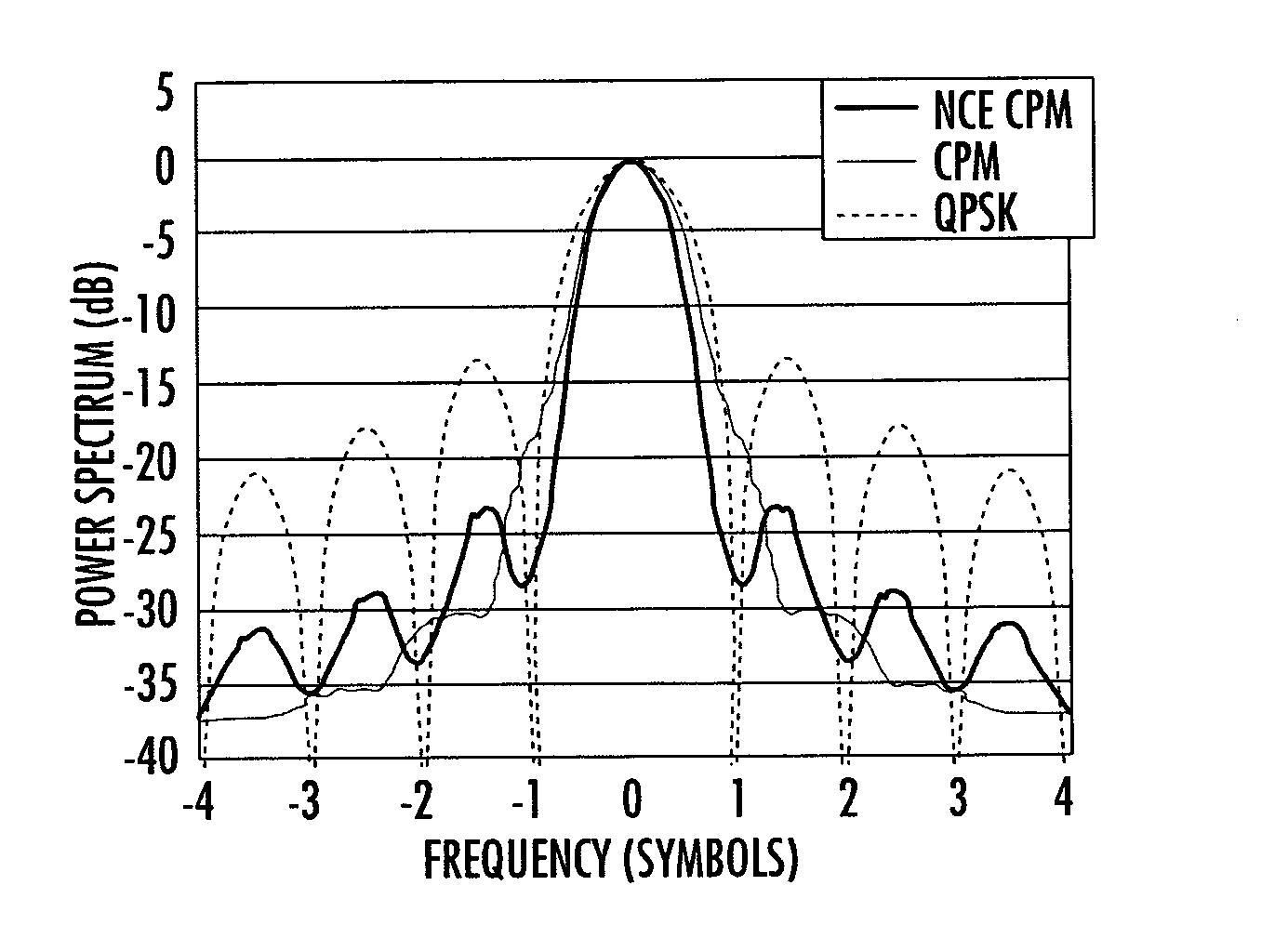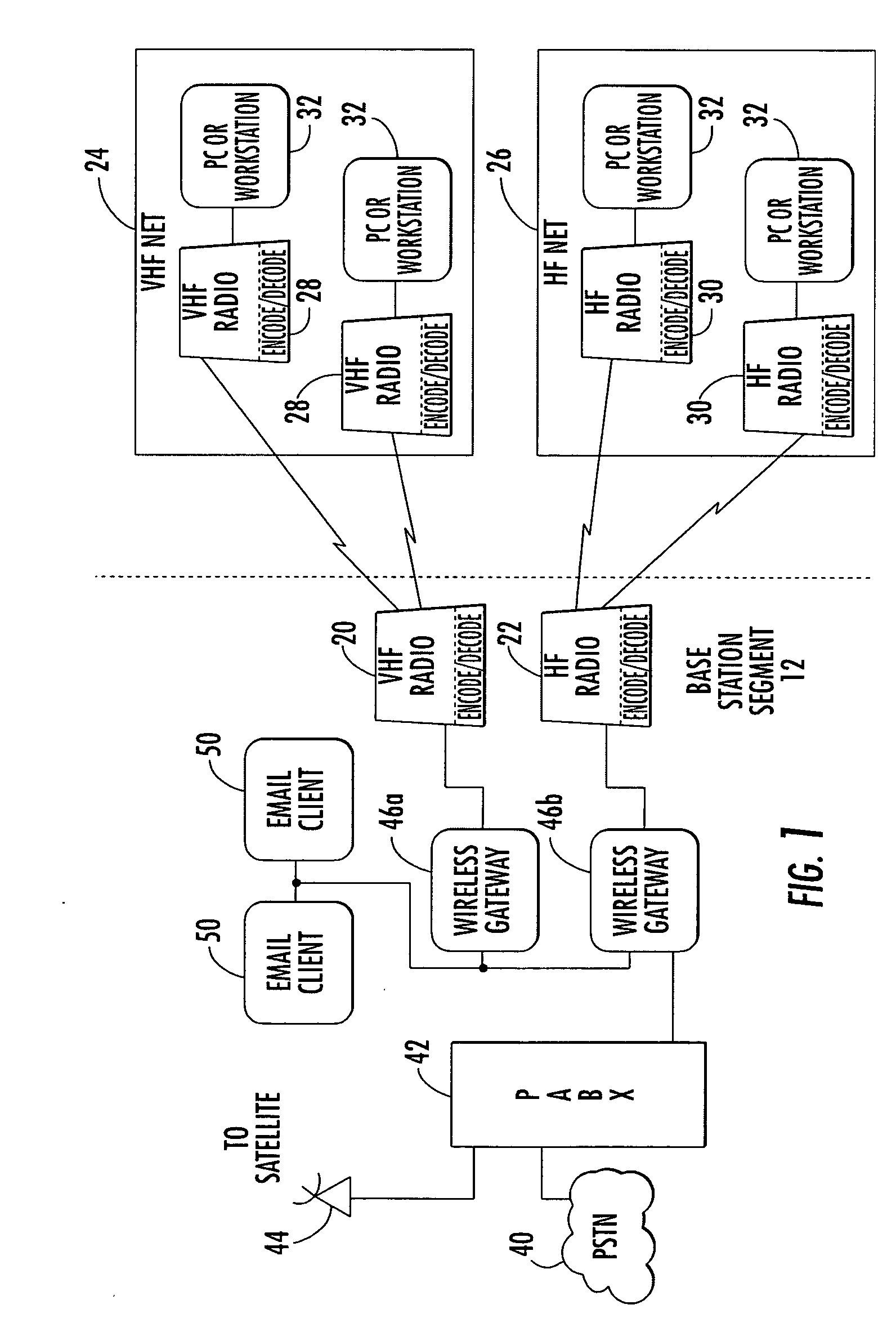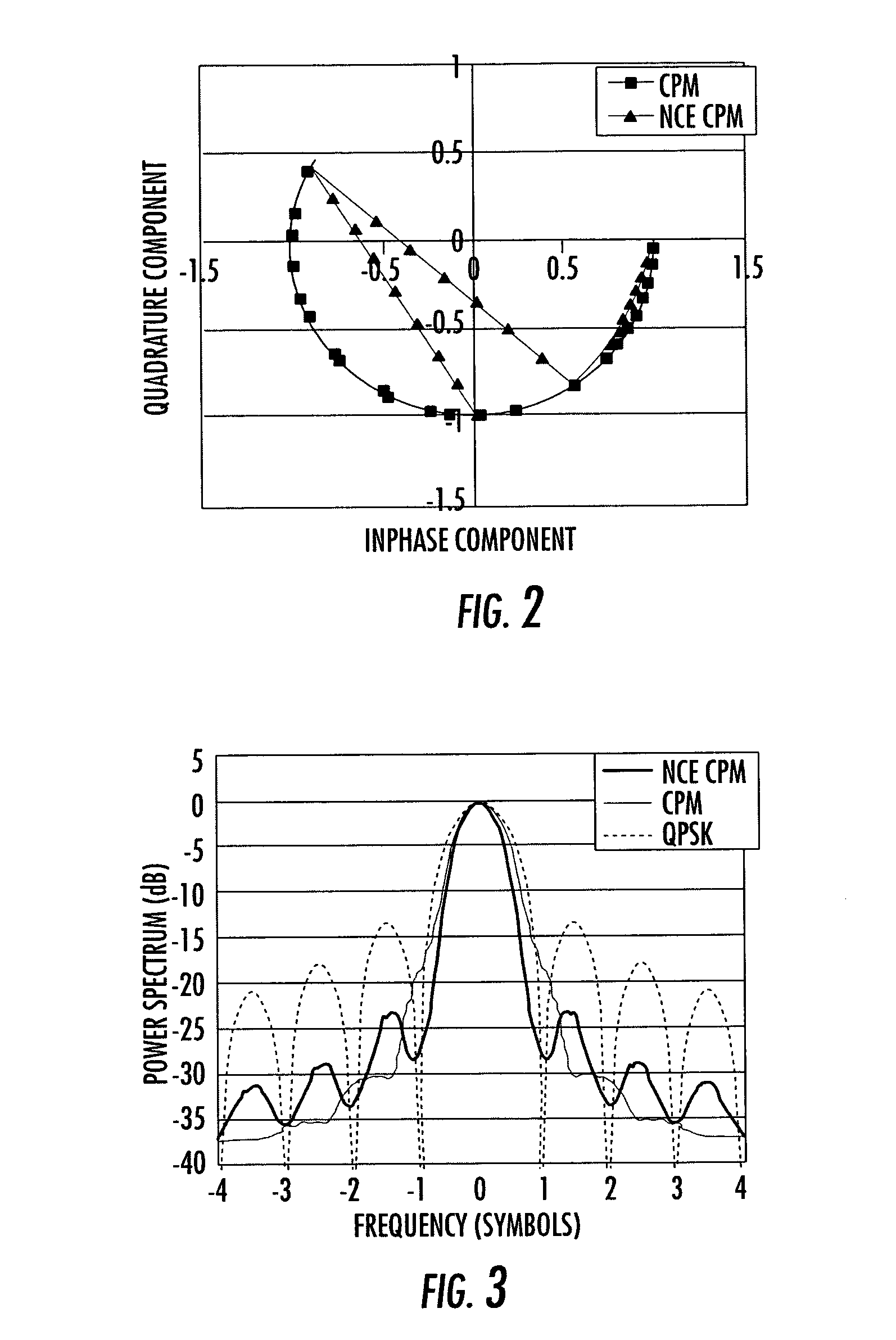Continuous phase modulation system and method with added orthogonal signals
a phase modulation and orthogonal signal technology, applied in the field of communication systems, can solve the problems of not greatly increasing the complexity of the receiver, and achieve the effects of increasing the bandwidth of the signal, improving the bit error rate performance, and increasing the number of bits
- Summary
- Abstract
- Description
- Claims
- Application Information
AI Technical Summary
Benefits of technology
Problems solved by technology
Method used
Image
Examples
Embodiment Construction
[0028] The present invention will now be described more fully hereinafter with reference to the accompanying drawings, in which preferred embodiments of the invention are shown. This invention may, however, be embodied in many different forms and should not be construed as limited to the embodiments set forth herein. Rather, these embodiments are provided so that this disclosure will be thorough and complete, and will fully convey the scope of the invention to those skilled in the art. Like numbers refer to like elements throughout, and prime notation is used to indicate similar elements in alternative embodiments.
[0029] The present invention is applicable to communication systems and products in general and particularly systems that require modulation schemes that occupy a fixed bandwidth channel (LOS, cable or SATCOM) (fixed frequency spectrum). The present invention can take advantage of the memory (usually represented as a trellis structure) of a coded waveform (i.e., PSK, ASK,...
PUM
 Login to View More
Login to View More Abstract
Description
Claims
Application Information
 Login to View More
Login to View More - R&D
- Intellectual Property
- Life Sciences
- Materials
- Tech Scout
- Unparalleled Data Quality
- Higher Quality Content
- 60% Fewer Hallucinations
Browse by: Latest US Patents, China's latest patents, Technical Efficacy Thesaurus, Application Domain, Technology Topic, Popular Technical Reports.
© 2025 PatSnap. All rights reserved.Legal|Privacy policy|Modern Slavery Act Transparency Statement|Sitemap|About US| Contact US: help@patsnap.com



